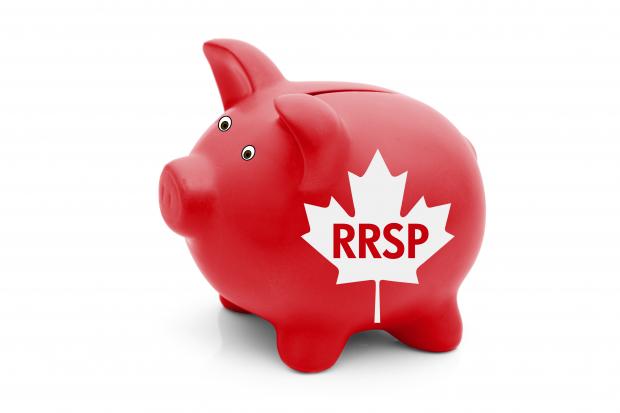
Five Biggest RRSP Mistakes
It is RRSP time of year again. We have until March 1, 2017 to make our annual RRSP contributions to our 2016 RRSPs. Most investment advisors will be knocking on your door saying that it is time to contribute to your RRSP. An RRSP is great for advisors as they lock in capital for investing and it can give a large tax refund that can increase your investments. Here are the five biggest mistakes I see people make with RRSP contributions.
Mistake 1 – Taking the deduction in the same year as contribution
The year that an RRSP contribution is not necessarily the best year to take the deduction. In fact, you can take the deduction for the RRSP contribution in ANY year after you make the contribution. Many people make this mistake when they are in University or training programs. They hear that an RRSP contribution should be made, so they do it, after all, their bank advised them to contribute. Taking a deduction when income is not resulting in tax or income is significantly less than what you will earn in the future is a bad idea. Contribute to your TFSA instead. If you make a $10,000 contribution to your RRSP during school years, you will likely get a ZERO tax refund. However, when you take it out in future, you may end up paying significant tax on the withdrawal.
Tip: Make the contribution if you want, but wait to take the deduction. However be careful that you do not make Mistake 4 and accidentally over-contribute to your RRSP.
Mistake 2 – Spending the Refund
The tax refund you receive from your RRSP contribution can be significant. Say you make a $20,000 contribution and your tax rate is 48% you may get a refund of $9,600! But here is the catch, that is not a tax savings it is a tax deferral. The difference being that you will need to repay a chunk of that tax when you withdraw your funds from your RRSP. Say you withdraw $20,000 when your tax rate is 30% you end up having to pay $6,000 in taxes back to the CRA and the tax savings was only $3,600.
Tip: It may be great to get that refund, but maybe it is better to invest it in your TFSA or RRSP rather than putting the money down as a deposit on a new Xbox. By reinvesting the refund, you get to ‘supercharge’ your RRSP, and this is the real power of the RRSP.
Mistake 3 – Dying with a large RRSP
This one is the worst! I have had a few clients who have seen their parents’ savings evaporate into a large tax bill. Dying with a one-million dollar RRSP on death may leave only 500-thousand dollars after taxes. (see mistake 5 for more). Essentially, on death one is considered to have withdrawn their entire RRSP at that time (except under a few specific exceptions). As a result that contribution made which resulted in a refund at a rate of 30% will end up paying tax at 48% and will likely make a big dent in any of the great tax-free investment growth earned in the RRSP.
Tip: If you can plan for death, draw down your RRSP over many years. If you cannot plan for death maybe consider getting a life insurance policy or just be willing to have your estate pay the tax.
Mistake 4 – Overcontributions
This one sucks and is often unintentional. If you ever get a notice of assessment which states the following call your accountant.
“You may have to pay a monthly tax of 1% on your RRSP/PRPP excess contributions because your unused RRSP/PRPP contributions (amount B) are more than your RRSP/PRPP deduction limit for 2016 (amount A), as noted on "Your 2016 RRSP/PRPP Deduction Limit Statement." For more about RRSPs, see Guide T4040, RRSPs and Other Retirement Plans for Retirement, at www.cra.gc.ca/forms.”
Luckily there is a grace amount of $2,000. So if you only over contribute by a few hundred dollars, there is no need for concern, but if you over contribute by a few thousand dollars, you are likely facing a penalty that is greater than the investment return you are making in the RRSP.
I find the biggest causes of overcontribution are as follows:
- Not understanding the difference between ‘Unused RRSP contribution’ and ‘RRSP Deduction Limit.' The unused contribution is how much you have paid into your RRSP, and the RRSP Deduction Limit is how much you can deduct. The RRSP Deduction Limit (A) MINUS the Unused Contribution (B) is how much you can still contribute. If the amount is negative, you have overcontributed.
- Not canceling a pre-authorized contribution to your RRSP when you stop working. As you only generate RRSP room when earning a salary, this may lead to over contribution.
- Contributing to your RRSP while also being the recipient of a workplace pension plan. If you have a generous workplace pension plan, you may, in fact, have no RRSP contribution room. This RRSP adjustment is meant to prevent double dipping. Pay attention to your T4 and look for something called a pension adjustment amount.
Tip: This is fixable, but you do not want to ignore it. Speak to your accountant, but the first step will likely be to withdraw the funds that you have over contributed right away.
Mistake 5 - Not Looking at All the Options (here are four).
This one is more complicated. But essentially there are three or four main ways you can invest your money - each has different tax advantages and disadvantages.
Option 1 – Invest in RRSP. The advantage is that you can supercharge your return by investing your tax refund as well and your investments grow tax-free. The disadvantage is that you may pay a significant tax bill on withdrawal of the funds and you give up preferential investment income tax rates.
Option 2 – Invest in TFSA. The advantage is that your income grows tax-free and there is NO tax on withdrawal as well the withdrawals do not get added to your income which could have negative consequences on income-tested tax benefits. If you are gambling on the market and going for Big Stock Appreciation, TFSA is the way to go! The disadvantage is that you do pay your personal taxes up front reducing the capital you have to invest. TFSAs also should not be used by US persons.
Option 3 – Invest in a ‘non-registered’ account. This is recommended once you have filled up your TFSA. The advantage is that you benefit from the preferential tax rates on investment income and you can supercharge your investments by taking on tax deductible debt. The disadvantage is that you pay income tax each year on your investment income as well as when you receive the income. This tax reduces the capital you have to invest.
Option 4 – If available, leave the funds in your company to invest. The advantage is that you defer the personal level of taxation that you would incur if you took the funds out of the company (increasing your capital to invest) and you preserve the preferential tax rates on investment income. The disadvantage is a lack of creditor protection, and you pay a high rate of tax on investment income earned in the corporation although that may be able to be dealt with through tax planning.
In Summary…
Making RRSP contributions is one tool to help save for retirement but is not always the right decision. We recommend that you speak with your accountant and your financial advisor when determining the best strategy for yourself.
About Me: Michael Sadovnick is a CPA, CA, FEA. He qualified as an accountant as one the top 50 in Canada. This means that he is a well qualified accountant who works with many professionals, family enterprises, ultra/high-net-worth clients and many private businesses.
Do you want a free 20-minute tax strategy discussion? Send me an email at [email protected].
